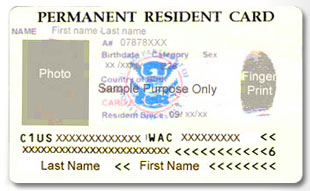How to get a Green Card?

The goal of many of our clients is to obtain a lawful permanent residence or a “green card.” This enables them to live and work in the U.S. for the rest of their lives. So, how to get a green card? Russian Universal Services can help you obtain permanent residence through one of several categories. These categories can be divided into two main types: Employment-based green cards and Family-based green cards.
How to get a green card through work?
Immigrants with extraordinary ability in business, arts, or sciences;
Managers and Executives of international businesses;
Outstanding professors or researchers;
Immigrants with advanced degrees whose work is in the national interest;
Immigrants with job offers who have a Bachelor degree or higher, or who have work experience;
Religious workers and ministers; and
Immigrant Investors.
Some employment-based applications require “labor certification,” also known as PERM, which is a process by which the U.S. Department of Labor certifies that there is a lack of qualified U.S. workers in the position. Our immigration lawyer represents clients during this procedure as well.
How to get a family-based green card?
Each year, hundreds of thousands of people get green cards (become permanent residents) by being sponsored by their relatives. You may be eligible to get a green card if you are:
an immediate relative of a U.S. citizen (spouses, unmarried children under the age of 21, and parents of U.S. citizen petitioners 21 or older);
a family member of a U.S. citizen fitting into a preference category (unmarried sons or daughters over the age of 21, married children of any age, and brothers and sisters of U.S. citizen petitioners 21 or older);
a family member of a green card holder (spouses and unmarried children of the sponsoring green card holder);
a member of a special category (battered spouse or child (VAWA), a K nonimmigrant, a person born to a foreign diplomat in the United States, a V nonimmigrantor a widow(er) of a U.S. citizen).
There are numerical limitations established by the Immigration and Nationality Act, and each year a tabulation is made for each category by country for visas issued. When the numbers exceed the allowable usage a backlog is created. An individual can only process the final stages (adjustment or consular processing) at such time that a visa number is available and allocated to him or her. As a result of the common backlogs that are created the individual’s priority date (or place in line) becomes important to the processing of a case. The priority date is established by the date of filing of the initial application. The Visa Bulletin, which is released each month by the U.S. State Department, provides the cut-off dates in each of the preference categories outlined above.
Free resources
How to obtain permanent residence through family?
How do I help my relative get a green card if I’m a U.S. citizen?
How do I help my relative get a green card if I’m a permanent resident?
How do I help my children to get green cards to live in the United States as permanent residents?
How do I financially sponsor someone who wants to immigrate?
What is an Affidavit of Support?
How much money do I have to make to support my relative?
Visa Availability & Priority Dates
With all questions regarding the Green Card and Citizenship – please contact our office.
